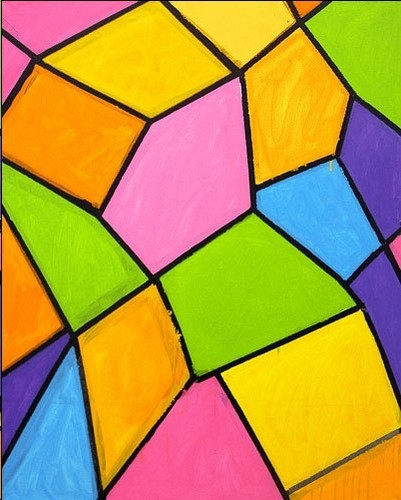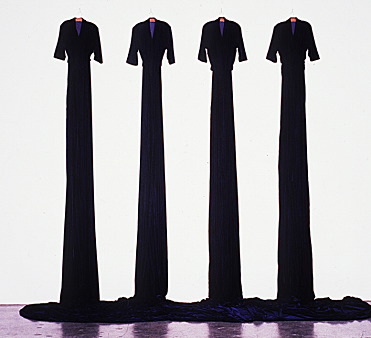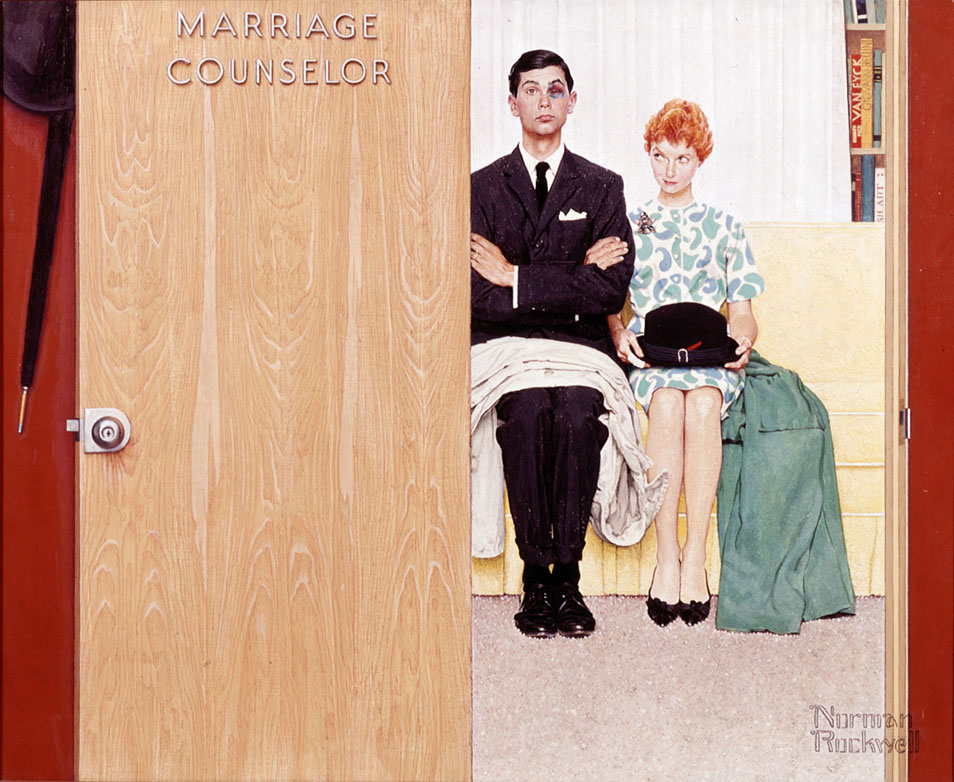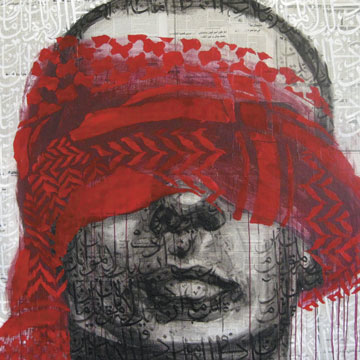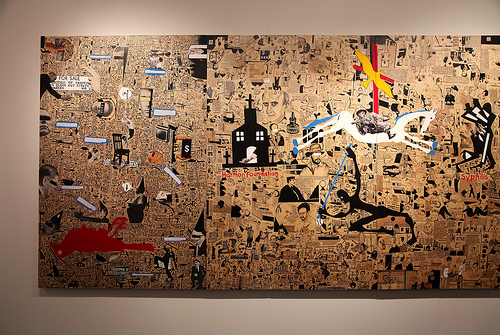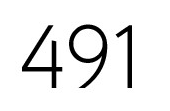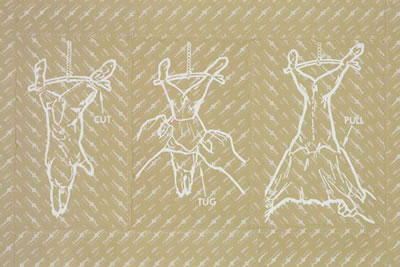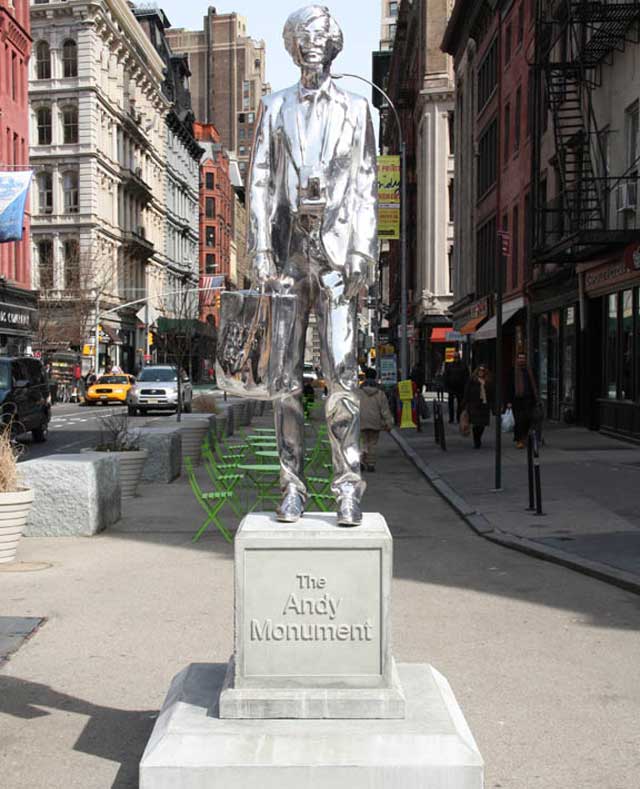The past months at AAP NYC have been bustling with excitement. As if internships, critiques, shows, openings, and the general hype of city living weren’t enough to keep us on our toes, teachers have brought in a slew of guest speakers—at least two every week—to titillate our curiosities. Below, find an abridged list of these speakers who have come to the AAP location, and others whom we have gone to visit.
Feb. 7, Gallerist Lisa Cooley speaks to David Schafer’s Professional Practice class
Having recently opened her own gallery on the Lower East Side in Manhattan, Lisa Cooley spoke to us with little reservation. Candid and friendly, she explained her role as a gallery owner and curator, the steps she took to achieve this title, and the trials she has overcome along the way. The discussion to follow was extremely informative as she generously offered us her insight on the gallery world as a whole: press releases, openings, public arm-rubbing, artist-dealer relationships, to name just a few topics.
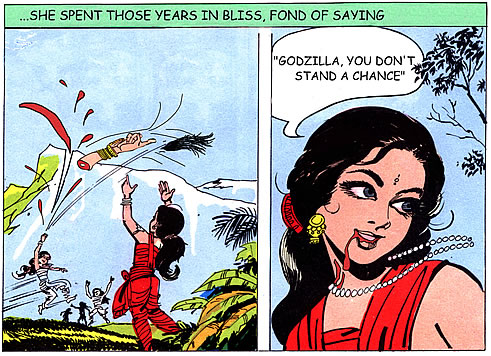 Feb. 11, Artist Chitra Ganesh speaks to Jeff Gibson’s Art Theory class
Feb. 11, Artist Chitra Ganesh speaks to Jeff Gibson’s Art Theory class
Brooklyn born, artist Chitra Ganesh spoke to us about her dealings in the New York art world as they have evolved over the last decade. She very generously discussed some of the weighty cultural issues and thematic content at the heart of her work (a melting pot of religions, mythologies, cultural influences, and images), while describing the allure of basic visual forms (e.g. comics) and materials. As her work is discursively variable, and considered in various lights world wide, it was certainly a treat to engage in this intimate discussion of her work and career.
Feb. 11, Curator Howie Chen speaks to John Jurayj’s Studio class
Howie Chen represents one half of the undertaking DISPATCH, a “transparent” curatorial space that “brings curators out of the back office.” He spoke to us about his influences and the impacts he hopes to have on the contemporary art world and market.
[Abstract from DISPATCH website, “Dispatch is a New York-based curatorial partnership between Howie Chen and Gabrielle Giattino established in 2007. Dispatch offers a model for curatorial production: an office for receiving and originating exhibitions, projects, and concepts treated as time-sensitive transmissions. Responding to a curatorial field that is increasingly preoccupied with institutional self-administration and formalized bureaucracies, the activities of Dispatch reflect the independent ability to mobilize with tactical urgency, editorial decisiveness, and critical rigor.]
 Feb 14, Eleanor Whitney of the New York Foundation for the Arts speaks to David Schafer’s Professional Practice class
Feb 14, Eleanor Whitney of the New York Foundation for the Arts speaks to David Schafer’s Professional Practice class
Eleanor Whitney discussed intimately and at length the processes involved in applying for a NYFA grant: an option considered (and applied for) by many New York State artists. Her input was interesting as she describes that which most grant boards are looking for: short, clear, definitive statements about your work (a challenge David Schafer has since been asking us to undertake).
Feb. 18, Artist Mary Heilmann speaks to John Jurayj’s Studio class
What was it like to be a female artist living in the eye of the NYC AbEx tornado? Excerpts from Mary Heilman’s talk with the AAP art students: “We (artists at the time) were all hanging out at Max’s Café…you had to be cute to get upstairs to the dance party. So, we were all trying to look cute and get the guys’ attention…. Showin’ around, getting’ in beefs, being cute—you know… I came into it like a kid does art, to get attention. First with the guys [referring to superstar 60s artists like Richard Serra and Brice Marden]. And after 40 years it worked—I had a show at the New Museum and then those guys started to like me! …I’m not really crying… [sniffle]….. I used to be a loner but now I’m all about the community—it’s a better business model to not be totally competitive… I want people to put two and two together in their head, which is sometimes a long shot but if you’re just standing there and daydreaming sometimes it happens; I put chairs in my shows so people will sit down and stay. I mean it hasn’t really worked out but don’t you hate it when you have to stand in front of a movie?…. So beauty really is what I’m thinking about… it’s a cool way to stay young—just to keep doing this stuff and keep relating to it.” Mary was real, unreserved, and incredibly informing.
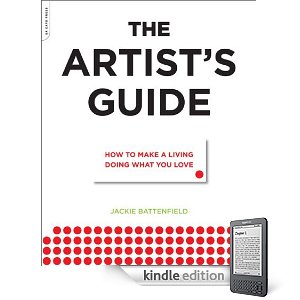
Feb. 21, Jackie Battenfield speaks to David Schafer’s Professional Practice class
Author of The Artist’s Guide: How to Make a Living Doing What You Love
Jackie Battenfield spoke to us about, in so many words, her economic survival in the tumultuous world of the New York City high arts. She, as done in her successful Artist’s Guide, generously provided us with tips on writing and talking about our work and some different settings and audiences to expect while doing so.
Feb. 22, Beverley Semmes speaks to Jeff Gibson’s Art Theory class at her studio in the Brooklyn Navy Yards
After a life-threatening trek out to the Brooklyn Navy Yards, Jeff Gibson’s theory class found refuge in the studio of artist Beverley Semmes. She spoke to us on the content of her evolving body of work from the past thirty years: a combination of various feminine crafts and bright colors.
Feb. 24, Masha Panteleyeva’s Art History class meets at the Brooklyn Museum for a guided tour of the Norman Rockwell retrospective
Norman Rockwell: Behind the Camera traces the successful career of an American favorite. The show includes both Rockwell’s finished paintings, as seen on covers of The Saturday Evening Post, and the photos from which he worked (a sort of pre-historic Photoshop, as he cuts and reassembles the photographs before appropriating them into his paintings). The combination of paintings and photographs helps us to reconsider his work in a contemporary light: as both somewhat skeptical of the American ideals he seems to celebrate.
Feb. 28, Artist Katy Schimert substitutes for David Schafer’s Professional Practice class
As David Schafter lectured in LA on his work, artist Katy Schimert spoke in his place. Energetic, bubbly, and totally wacky, she gave us an intimate recount of her career while revealing a wealth of influences and ideas to us. Later, we presented our own 100 word artist statements, which she critiqued. It was a lovely class. Highlights, “moon rocks are the most rare thing on Earth, so I made them into male and female sexual parts….my father had a fear of brainwashing so I wanted to put these sculptures in the woods, like in Central Park… have you ever had that experience where you’re talking to someone, and their face changes and becomes another face… a work of art should turn on you—say who you are. Art should jolt you.”
March 4, Curator Reem Fada speaks to John Jurayj’s Studio class
Guggenheim curator and fellow Cornellian, Reem Fada (also curator for Tarjama at the Johnson Museum) discussed with us her current research and its applications in contemporary arts curation. She spoke to us primarily on political happenings in Egypt, North Africa, the Middle East, and Southern Asia as they propel her research, while glancing over some of the Islamic works that inform it.
March 4, Deborah Grant gives a public talk at Volta NYC, Jeff Gibson’s Art Theory class in attendance
Featured artist at the Volta fair (in collaboration with the NYC Armory Show) Deborah Grant, in an intimate interview with a friend and curator, spoke about many of the cultural issues at the heart of her work. With her work on display in the show, it was very valuable to receive her extensive input beforehand, as it informed our experience of the work later immensely.
Earlier, Jeff’s class spent the day meandering the halls of the uptown Armory Show: an endless abyss of galleries and artworks from around the world. Taking pictures and copious notes all the while, students were later asked to curate a hypothetical show of 6-15 pieces seen at the armory and compose a manifesto that validates their relationships.
March 7, Artist and curator Bret Schneider speaks to David Schafer’s Professional Practice class
Curator and artist Bret Schneider spoke with great ease and eloquence on, more or less, the entire history of curation and his hopes to affect it in the contemporary climate. He discussed his evolving practice, as he grew from sound-artist to theoretical curator over the past decade, and the products of this evolution (various websites and publications that deal with modern notions of curating- e.g. “The Platypus Review,” “Idea Bank,” “museum1626,” and “fourninetyone” [all available online]).
March 11, Jeff Gibson’s Art Theory class travels t the Studio Museum of Harlem for an artist in residence, Paul Mpagi Sepuya
Paul Sepuya, a young photographer and recipient of the Studio Museum of Harlem artist’s grant and studio space, invited us into his studio and talked, with great charisma and generosity, about his work: digital photographic portraits of his friends and acquaintances. He also informed us, a group of young art students worrying about their future, of the real possibility of receiving artist grants and making (and showing) work out of college.
March 14, Curator Christian Rattemeyer speaks to David Schafer’s Professional Practice class
MoMA curator Christian Rattemeyer has a hand in several of New York’s (and the world’s) biggest exhibitions; we had the treat to hear him speak about this massive, creative, and intellectual responsibility. He discussed the research behind one of his recent publications and the curatorial theories backing his decisions for shows at the Museum of Modern Art. It was a treat to hear directly from the museum God-figure in person—to receive wisdom from behind the curtain—and discuss that role in general.
March 17, Thomas Leeser speaks to Masha Panteleyeva’s Art History class
Architecture studio professor here at AAP NYC, Thomas Leeesr, presented to our Art History class an inspection on Modernism and its evolved reception in America since the sixties as seen through the eyes (and camera) of actor and film director Jaques Tati (and his concept of “playtime”).
March 18, Bob Buck speaks to John Jurayj’s Studio class
Formerly known as Robert Beck, contemporary artist Bob Buck spoke to John Jurayj’s art studio class about many of the concerns at the heart of his work: mainly the nature of language, signage, and naming. Having changed his name as an artistic act, Buck spoke on his considerations of language as an abstract object and metaphor, and the professional repercussions he has endured due to these considerations.
March 18, Kate Gilmore speaks to Jeff Gibson’s Art Theory class
Recently exhibited in the Whitney Biennial, artist and feminist Kate Gilmore spoke to us on her body of work and considerations as a contemporary artist and woman. Friendly, easy going, and generous with her insights, Kate explained her interests in notions of accessibility and her increased tendency to let criticism and theory follow the production of her works (comforting news coming from a successful artist to a class of young art theory students).
March 21, Jesse Hammerman speaks to David Schafer’s Professional Practice class
Jesse Hammerman of the Public Art Fund New York spoke to us about several of the recent projects he has curated around the city (the steps taken in finding artists, fabricating works, legal rights, etc). The next day, he was seen just down the street (pacing back and forth on his cell phone, discussing logistics) as a new installation by the Public Art Fund arrived in Union Square: The Andy Memorial.



